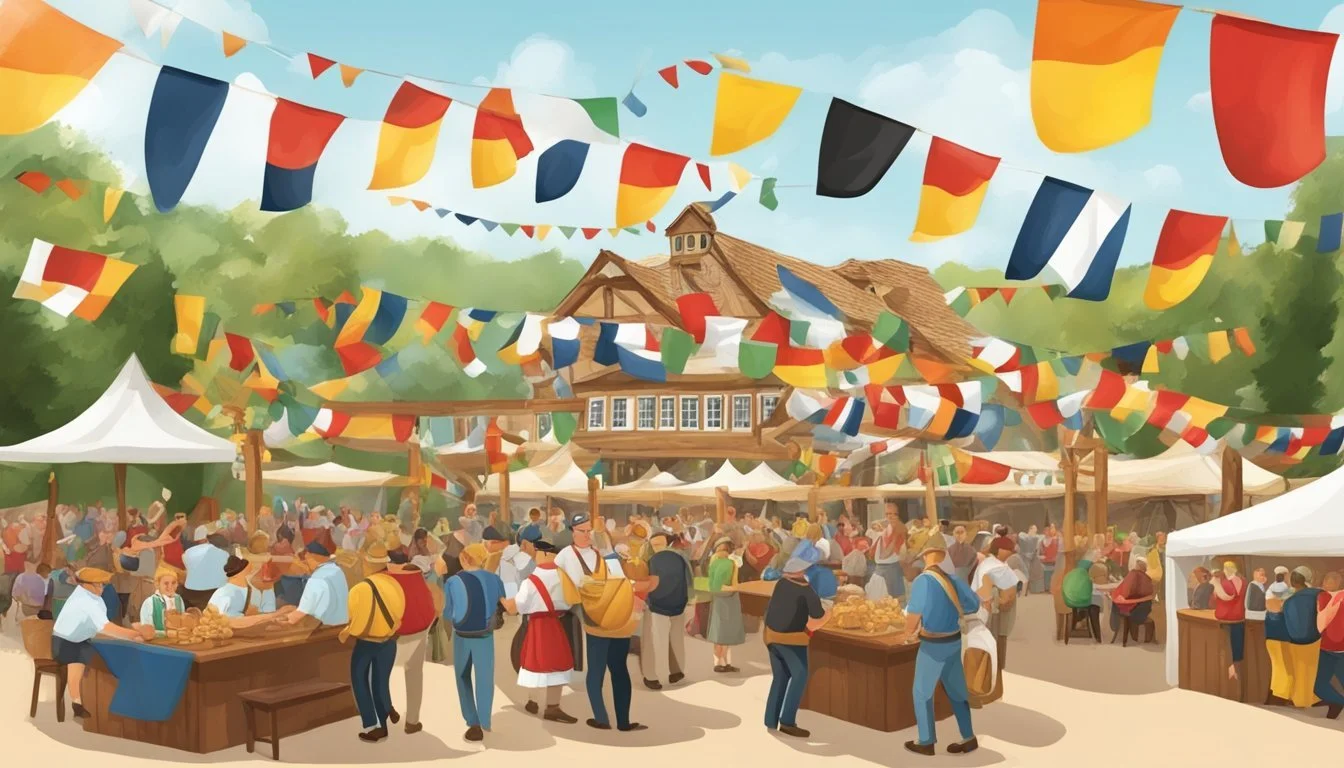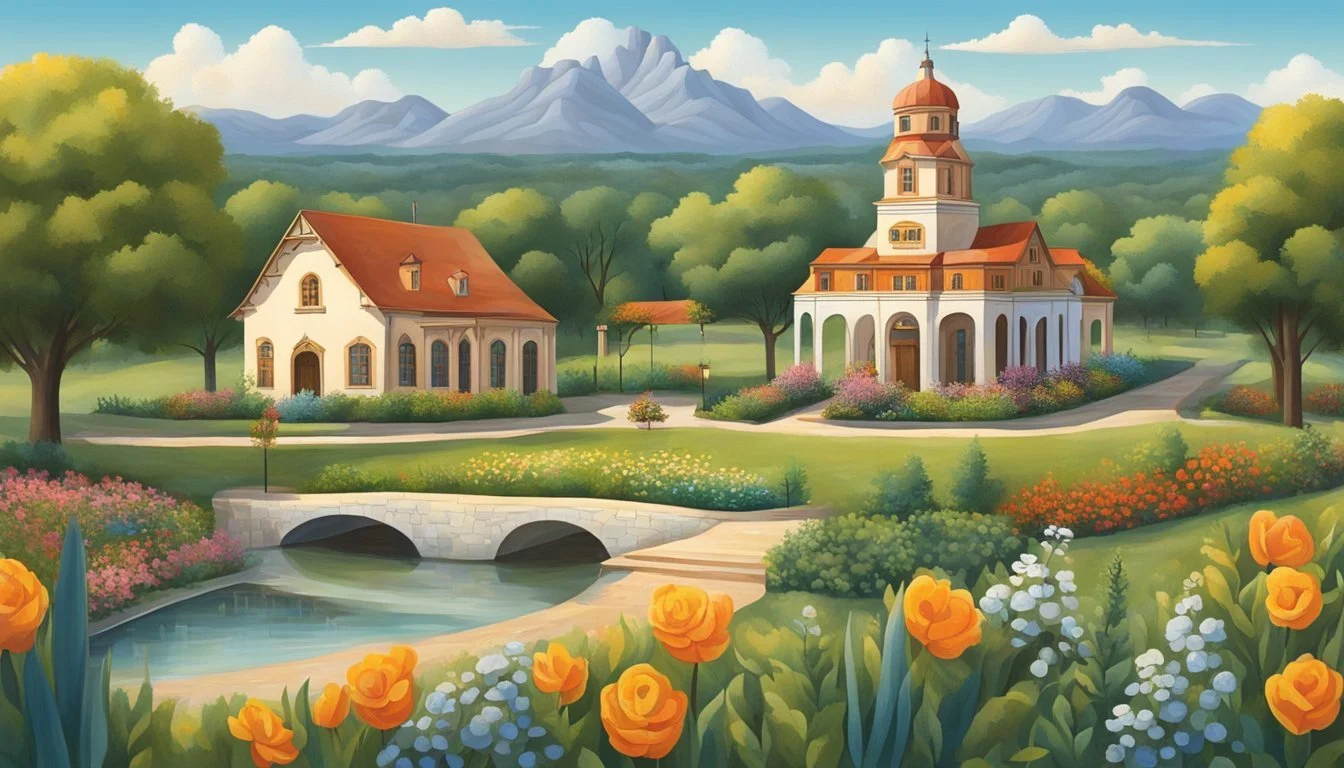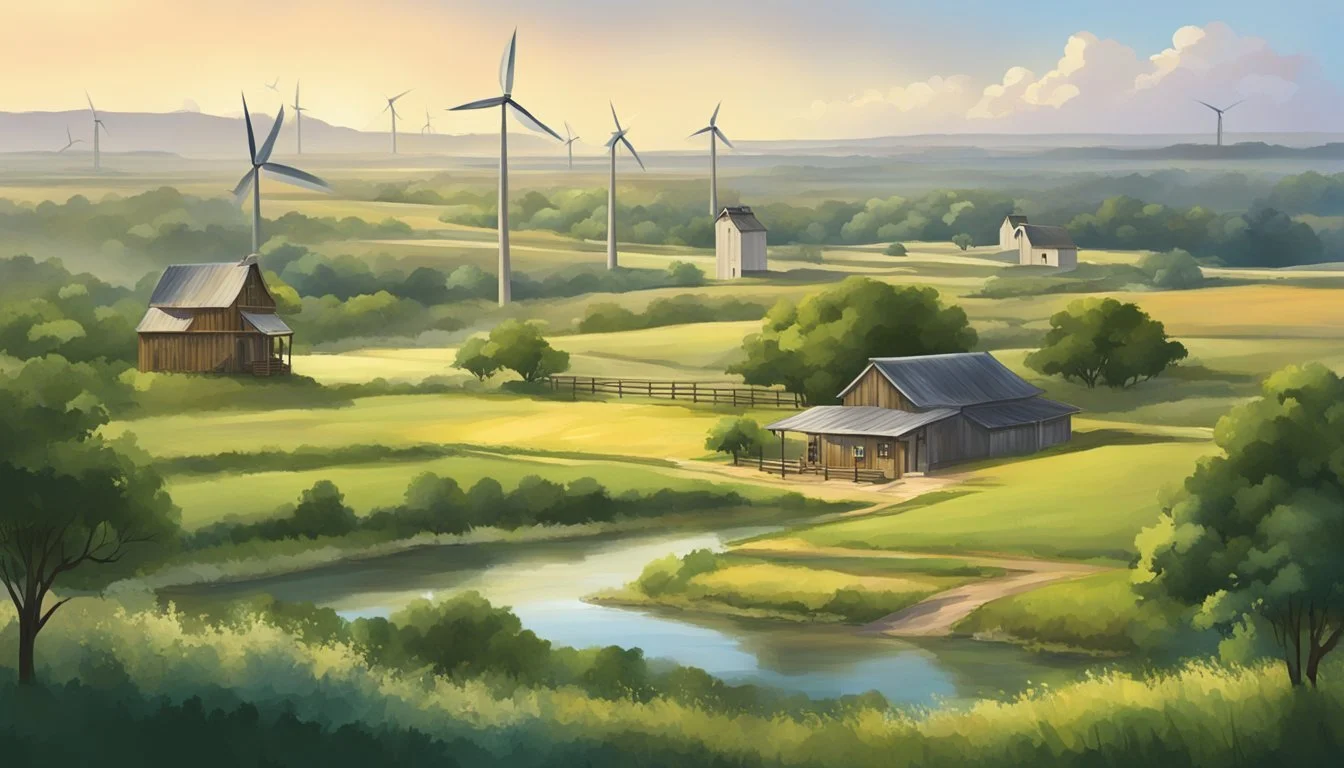The Enduring Legacy of German Culture in Texas
Influence and Integration
The State of Texas, notable for its vast landscapes and rich history, proudly exhibits a colorful tapestry of cultural influences. Among these, German culture stands out for its significant and durable impact. Dating back to the mid-19th century, German settlers were drawn to Texas, seeking refuge from political and religious upheaval in Europe. They established various towns, such as New Braunfels and Fredericksburg, embedding their customs, language, and architectural styles into the heart of Texan life. Today, these communities continue to celebrate their German heritage through festivals, music, cuisine, and historic preservation.
The legacy of German settlers in Texas has transcended mere historical footnotes to become a living part of the state’s cultural mosaic. German traditions have been maintained and evolved over time, symbolized in annual Oktoberfest celebrations, traditional dance halls, and the architectural beauty of half-timbered buildings scattered across Texan towns. Furthermore, the introduction of classical music, opera, breweries, and biergartens by the early settlers brought new cultural dimensions that have since been interwoven into the fabric of everyday life in Texas.
Moreover, the German language itself persists in the state, with Texas having one of the largest populations of German speakers in the United States. Such vestiges of the German presence are a testament to the enduring influence of German immigrants on the cultural landscape of Texas. This influence extends beyond quaint customs and into the very ethos of Texan society, reflecting a history of integration and the celebration of diverse heritages within the United States.
Historical Overview of German Influence in Texas
German immigrants have played a pivotal role in shaping Texas's history and culture. Their enduring legacy is embedded within the state's diverse societal fabric and can be traced back to the early 19th century.
Early German Immigrants and Settlements
In 1845, a wave of German families arrived in Texas, led by noble figures like Prince Carl of Solms-Braunfels. They settled in areas such as New Braunfels and Fredericksburg, which soon became centers of German Texan culture. These settlements in the Texas Hill Country, situated between the borders of the Nueces River and the Rio Grande, were instrumental in preserving German traditions and language.
New Braunfels: Established by Prince Carl of Solms-Braunfels to mirror his homeland's society.
Fredericksburg: Soon followed, becoming another stronghold of German heritage in Texas.
Contribution to the Texan Confederacy and Union
German immigrants in Texas found themselves in a complex situation during the Civil War. Some supported the Confederacy, but a significant number held Unionist views, leading to internal conflicts and contentious standoffs. Their contributions were not solely military; they also brought skills and traditions that enriched the cultural and economic landscape of Texas.
Confederate Support: A faction of German Texans fought for the South.
Unionist Views: A sizeable group faced persecution for opposing the Confederacy.
Through their early settlements and the complex tapestry of their allegiance during the Civil War, Germans in Texas laid the foundations for a cultural legacy that remains to this day.
Cultural Heritage and Traditions
The imprint of German heritage on Texas is evident in various aspects of local culture, particularly in food, music, dance, language, and community gatherings. These rich traditions continue to shape the identity of many Texan communities today.
Food and Culinary Influence
German settlers left a robust culinary legacy in Texas, with sausages, sauerkraut, and pretzels becoming staple foods. The state is renowned for its beer gardens and breweries, where craft beer pays homage to Germany's age-old brewing traditions. Iconic dishes like schnitzel, bratwurst, and strudels are regularly featured in menus across the region.
Sausages: Varieties include bratwurst, knackwurst, and bockwurst
Breads: Pretzels, rye bread, and pumpernickel
Desserts: Strudels and black forest cake
Music and Dance
German influence is prominently displayed in Texan music and dance. Classical composers like Bach and modern genres have melded to form a unique Texan music scene. Polka music and the dance known as Schuhplattler have been preserved in cultural clubs and dance halls.
Classical influence: The works of German composers are performed by local orchestras.
Folk traditions: Community polka bands and dance groups.
Language Preservation
The German language persists in many communities, highlighted through signage, educational programs, and dedicated language preservation efforts. It serves as a living testament to Texas's diverse linguistic culture.
German language: Taught in schools and community centers.
Bilingual signage: Found in historically German neighborhoods and towns.
Festivals and Community Events
Festivals celebrate German heritage, with events such as Oktoberfest and Maifest drawing in crowds. These gatherings showcase German traditions, from food and beer to music and crafts, cementing the cultural bond between Germany and Texas.
Oktoberfest: Features beer, sausages, and lederhosen.
Christkindlmarket: A traditional German Christmas market.
Architectural and Historical Landmarks
The architectural imprints and historical edifices preserve the rich German heritage in Texas, showcasing the unique blend of cultural influences through landmarks and preserved sites.
Fredericksburg and Its Heritage
The town of Fredericksburg stands as a bastion of German Texan culture, with its Marktplatz serving as the central gathering spot complete with the Vereins Kirche, a distinctive octagonal building reflecting German architecture. The Pioneer Museum complex further echoes this heritage, providing insight into the lives of German settlers through well-preserved structures and artifacts.
Historic Sites in Castroville
Castroville showcases its Alsatian roots through architectural landmarks such as the Landmark Inn State Historic Site. This once-operating inn and mill, built in the mid-19th century, now operates as a museum, featuring an Alsatian-Style Structure that is emblematic of regional heritage. Villa Finale, a historical site not originally in Castroville but in nearby San Antonio, gives another nod to the European-influenced architecture prominent among Texas's German legacy.
German-Texan Communities Today
Today's Texas landscape is still dotted with towns and cities where German culture shapes local communities, preserving its rich heritage even in modern times.
San Antonio's German Footprint
San Antonio exhibits a proud German heritage through its vibrant King William Historic District, once known as "Sauerkraut Bend." The area reveals German influence in architecture and community activities. German Hall, also known as Beethoven Maennerchor, continues to be a center for German culture, hosting events like Oktoberfest and traditional choirs.
Austin and Modern German Influence
In Austin, Germans have contributed to a diverse cultural tapestry. The city's music scene, including classical and opera, owes much to German Texans. Moreover, festivals and biergartens reminiscent of German traditions are popular among locals and visitors, reflecting the contemporary German vibe within Texas's capital.
Rural German Communities in Texas
Small towns like Boerne and Comfort, founded by German immigrants, sustain their roots through historical buildings and German-named streets. They are treasure troves of German-Texan history, with their quiet charm and enduring community bonds. Here, unique cultural landmarks and annual festivities continue to celebrate their German past.
German Impact on Texan Arts and Expression
The influence of German immigrants on Texan arts is evident through a unique fusion of traditional German styles with Texan motifs. This blend has given rise to distinctive art forms and movements that have become an integral part of Texan culture.
The Legacy of German Artists
German artists who settled in Texas brought with them European artistic traditions, which they adapted to their new environment. Painters and sculptors, drawing inspiration from both their German heritage and Texan landscapes, contributed to a diverse artistic scene. A notable Texan artist of German descent, Elisabet Ney, stands as a testament to the German impact on the state's art heritage. Ney's sculptures often reflect a blend of classical European techniques with prominent figures in Texan history, bridging two worlds through her works.
Contemporary Texan-German Art Movements
In modern times, artists of German lineage continue to influence the Texan art world through various movements, including Expressionism. This artistic style is characterized by bold colors, emotive forms, and a preference for individual perspective over realism. Contemporary Texan-German artists often utilize Expressionism to portray cultural narratives and the richness of Texan life. These artists contribute not only to traditional gallery spaces but also to public art installations across Texas, echoing the state's dynamic and evolving cultural landscape.
Religious and Social Dynamics
In Texas, the German cultural heritage distinctly marks religious and social structures. The influx of German immigrants during the 19th century introduced a diverse array of Protestant denominations, profoundly influencing religious dynamics in the state. Lutheran and Catholic communities today reflect the historical presence of Germans, maintaining liturgical practices and ecclesiastical traditions reminiscent of their European origins.
Community life in Texan cities with significant German influences, such as Fredericksburg and New Braunfels, showcases a unique blend of Texan and German customs. Social events often celebrate this dual heritage, with annual festivals like Wurstfest embracing German culinary traditions alongside local Texan fare.
Cultural Heritage resonates through the architecture and town planning of these communities. Preservation efforts have maintained German-style structures, some of which include:
Churches with European features
Traditional German "Sunday houses"
Historical societies and museums
Religiously and socially, these Texan Germans have contributed to a pluralistic society that cherishes freedom of religion while fostering a sense of communal unity. Their settlements have evolved into cultural hubs that facilitate interfaith dialogue and a robust civil society.
Through such dynamic interplay of heritage and integration, the legacy of German culture in modern-day Texas offers a testament to the enduring influence of religious and cultural practices shape the social landscape.
Economic Contributions and Agriculture
German immigrants significantly influenced Texas's economic landscape through various industries, especially in agriculture and brewing, which have left a tangible legacy that continues to impact Texas's prosperity and cultural identity.
The Brewing Industry
The brewing industry in Texas owes much to the German pioneers who brought their rich brewing traditions. These immigrants established numerous breweries across the state, leveraging the spring waters of Central Texas to produce beer. The influence is prominent in the numerous biergartens and the popularity of beer festivals, such as Wurstfest in New Braunfels, a celebration rooted in German culture.
Agricultural Development
German settlers heavily contributed to agricultural development, introducing European crops and innovative farming techniques. They played a key role in diversifying Texas agriculture by cultivating a variety of crops, including corn, wheat, and rye, which were not originally staple crops in the region. Their farming methods helped establish Texas as an agricultural powerhouse.
Cattle Ranching and Farming
The sectors of cattle ranching and farming also flourished under German influence. German immigrants were among those who advanced these sectors, integrating their traditions with the local agricultural landscape. They put their stamp on Texan agriculture by establishing cattle ranches and farms, thereby contributing to the state's economic development and food supply.
Conservation and Nature Conservation
The enduring legacy of German culture in Texas is manifested not only through its customs and traditions but also in the conservation efforts and environmental awareness carried forward in the state.
Nature Centers and Farms
Cibolo Nature Center, located in Boerne, Texas, serves as a prime example of German-inspired stewardship of natural spaces. It consists of 100 acres of natural habitats including Cibolo Creek and the Cibolo Conservation Corridor. The Center facilitates environmental education and sustainable practices, embodying the German ethos of nature conservation.
Adjacent to the Nature Center is Herff Farm, a historic 1850s homestead that now hosts the Farmers Market every Saturday. This space is a testament to the integration of agricultural heritage and environmental conservation. Visitors can purchase locally-sourced produce and goods, echoing the German value of maintaining a harmonious relationship with the land.
Environmental Initiatives
Initiatives such as the Cibolo Conservation Corridor focus on preserving the ecological integrity of water resources and habitats along Cibolo Creek. This project aligns with modern environmental objectives, pushing for the protection of biodiversity and sustainable land use—principles reflective of German culture's long-standing respect for the natural world.
Through projects and educational programs, these entities foster a culture of conservation that is integral to both Texan and German identities. These efforts ensure that nature conservation remains a core value for generations to come.
Conclusion
The cultural tapestry of Texas is deeply interwoven with the threads of German heritage, an enduring legacy that remains prominent across the Lone Star State. Communities such as Fredericksburg and New Braunfels, established by German settlers in the 19th century, serve as vibrant custodians of this rich history. They ensure that German traditions continue to enrich Texan culture through festivals, architecture, cuisine, and more.
Institutions like the Pioneer Museum in Fredericksburg and the numerous Texas Historical Sites shed light on the contributions of German immigrants. The preservation of places and education about the past play crucial roles in keeping the story of German Texans alive for future generations. Aspects such as music, breweries, and biergartens have been incorporated into the wider Texan culture, becoming beloved fixtures across the state.
Notably, the German language, once under threat of fading, also finds its place in the cultural preservation, with initiatives to maintain and celebrate the linguistic aspect of German heritage. This cultural retention and celebration underscore the respect and pride Texas holds for its diverse origins, with German influences being a significant element of the state's identity.
In essence, the German influence in Texas goes beyond historical importance; it is a living, evolving part of what makes Texas unique. The fusion of German culture with Texan traditions has given rise to a distinct cultural identity that reflects a commitment to honor and integrate its multifaceted past.









